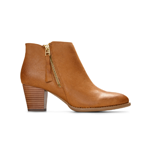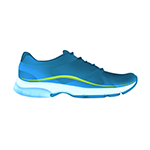
HOW TO FIND WORK OUT SHOES FOR PLANTAR FASCIITIS
 We not only want to help you understand plantar
fasciitis and look for the best shoes for working out for plantar fasciitis, including both
women’s and men’s shoes, but we’ve also earned a place in the
industry as a trusted resource that has dedicated foot doctors, research teams, and shoe stylists to deliver
you an easy solution to a painful and persistent problem. Along the way, we’ll educate you on
what plantar fasciitis is, why it’s important to find work out shoes designed for individuals with plantar
fasciitis, and how to find the best workout shoes for plantar
fasciitis.
We not only want to help you understand plantar
fasciitis and look for the best shoes for working out for plantar fasciitis, including both
women’s and men’s shoes, but we’ve also earned a place in the
industry as a trusted resource that has dedicated foot doctors, research teams, and shoe stylists to deliver
you an easy solution to a painful and persistent problem. Along the way, we’ll educate you on
what plantar fasciitis is, why it’s important to find work out shoes designed for individuals with plantar
fasciitis, and how to find the best workout shoes for plantar
fasciitis.
Breaking Down Plantar Fasciitis, One Step At a Time
Before you can get to searching for the perfect pair of workout shoes for plantar fasciitis, first we want to walk you through what’s going on in your feet step by step so that you understand why looking for certain supportive features in your work out shoe matters.
By now you know that plantar fasciitis is a common condition that affects many of us. Plantar fasciitis is also one of the leading causes of heel pain. But what exactly is plantar fasciitis? If you have plantar fasciitis, it is helpful to understand exactly what’s happening in your feet and why it is causing you pain and discomfort.
The plantar fascia is a fibrous, thick band of tissue that runs all the way from your toes back to your heel bone. This band of tissue is an essential part of your feet and plays a major role in everyday movements and mobility. Think of the plantar fascia as built-in shock absorption for the arch of your foot. Whenever you take a step, the arch of your foot has to absorb the pressure that is exerted on your feet and the plantar fascia helps to absorb shock. Many people don’t ever think about this band of tissue until it begins to become inflamed and stops providing the support and shock absorption it is designed to. When the plantar fascia becomes inflamed, you begin to feel discomfort and pain of varying levels depending on the severity of the inflammation.
You may be wondering, “How does it get inflamed?” Great question! The cause of the inflammation of the plantar fascia is stress on the tissue from it being stretched too much. When this stress is exerted on the plantar fascia over a continued period of time, tiny tears can develop on the surface of the plantar fascia. These tiny tears on the surface of the plantar fascia are what cause the plantar fascia to become inflamed and the subsequent pain and discomfort to develop. If the tearing and stretching of the plantar fascia continue over time, the irritation and inflammation of the tissue can worsen.
Now that you know how the plantar fascia becomes inflamed and why you feel discomfort and pain as a result of having plantar fasciitis, we want to walk through a few of the tell-tale signs that you may be suffering from plantar fasciitis. Do you wake up in the morning and experience sharp heel pains from your first few steps or when you rise from a sitting position? This is one of the most common indications of plantar fasciitis. Sharp, stabbing pains in the heel and bottom of the foot are one of the most common symptoms of this complicated condition. Constant strain and inflammation can exacerbate the injured and irritated plantar fascia, which can lead to worsening of the irritation and discomfort. The foot pain of plantar fasciitis often subsides or abates after continued movement, only to return again at a later time. It’s important to keep in mind that plantar fasciitis is different for each individual who is experiencing it. The severity and frequency of the pain vary depending on how irritated the plantar fascia is. One thing that is constant across everyone suffering from plantar fasciitis is that you’ll be looking for relief and comfort as soon as possible and trying to rid yourself of the painful foot pain that comes from this common condition. Now that you’re an expert on plantar fasciitis, we want to briefly touch on why it’s important to find supportive shoes that have the proper supportive features your feet need when you’re suffering from plantar fasciitis during your workouts.
Examining Why Support Matters
At Vionic, before we recommend you look for certain features or take certain steps, we first want to walk you through why it matters. We believe that when you’re equipped with the information and understanding you need, you can make an informed decision about the right footwear for you and feel confident while making that your decision is the best option for your unique needs. We believe that finding supportive features in your work out shoes is extremely important when you’re suffering from plantar fasciitis. As we mentioned above, when the plantar fascia continues to be stretched and torn over time, the pain and discomfort you feel can worsen. That’s not what we want and we know you don’t either.
To give your plantar fascia time to heal and prevent it from becoming too stretched in the future, it’s necessary to change the way your feet are connecting with the surfaces you walk on. Many of the surfaces we walk on today are man-made, hard, and unforgiving, which causes your feet to try to contour to the ground you’re walking on. By wearing shoes with the right supportive features (e.g. walking shoes with good arch support), you can disrupt this dynamic by providing your feet with a comfortable, cushioned surface that hugs your natural arch and gives your feet the support they need. This can help provide relief and comfort from the sharp, stabbing pains of plantar fasciitis by allowing your arch and plantar fascia to function as they are meant to, without the discomfort and pain you’ve been feeling. Now that we’ve told you the why, we want to dive into how to find the right shoes for being active and sneakers that will allow you to do just that when having plantar fasciitis.
How to Find Workout Shoes for Plantar Fasciitis
We know that looking for work out shoes for plantar fasciitis can be a daunting task when you aren’t sure exactly how to start looking or what to look for to get the relief and comfort you’re seeking. We’re here to help! If you’re perplexed by how to find work out shoes plantar fasciitis, the first step is to find a company that has made it their mission to integrate the latest biomechanical technology into their footwear to address the unique needs of your feet.
Many companies only consider fashion, which can have dire consequences for your feet and worsen your plantar fasciitis symptoms. We also know that many companies in the foot health industry turn a blind eye to fashion. For you to get the most out of your workout shoes for plantar fasciitis, they need to be in a style you will actually wear and integrate the latest in foot health technology and research to provide your feet with the support they need. We’ve built our business around bridging this gap so you never have to choose between the support you need and the styles you love again. We recommend looking for the supportive technology features outlined below when looking for work out shoes for plantar fasciitis.
- Substantial Arch Support: The first key feature to look for in work out shoes when you have plantar fasciitis is substantial arch support. As we discussed above, the arch of your foot and your plantar fascia work hand in hand to absorb the shock of your movements. Finding the right arch support for your feet begins with knowing your arch type. We recommend doing a wet footprint test to determine your arch type. Simply dip your foot in the water and then place your foot on a dark surface, such as black paper. You should be able to see the imprint of your foot. If there is a significant gap with no imprint between the front of your foot and the back, you likely have high arches, which are more susceptible to developing plantar fasciitis. If there is very little or no gap between the front of your foot and back, then you likely have low arches, which are also more prone to plantar fasciitis. If you have a gap between the front of your foot and back that is visible but not substantial, you likely have a medium arch, which is considered biomechanically efficient. While there is no one-size-fits-all when it comes to arches, no matter what arch type you have it is vital to have arch support in your footwear when you have plantar fasciitis.
- Sole Cushioning: If you have plantar fasciitis, it’s important that your feet have sole cushioning inserts to help absorb the impact when you take a step and offset the pressure being placed on the plantar fascia. Think of sole cushioning as removable insole clouds for your feet that will help you feel comfortable all day long!
- A Biomechanical Footbed: To make sure your stride and each step is properly supported, we recommend looking for work out shoes with a biomechanical footbed that promoted natural alignment from the ground up. When your foot is not properly aligned, it can cause a cascade of consequences that can worsen the pain and discomfort you’re feeling with plantar fasciitis.
- Deep Heel Cup: The final feature we recommend looking for when you’re searching for work out shoes for plantar fasciitis is a deep heel cup that will provide you with stability and help absorb the impact of your movement and the subsequent pressure that is placed on your feet. When you’re working out and have plantar fasciitis, it’s vital to have stability so that your movements don’t worsen the stretching and tearing on the surface of the plantar fascia.
Now that you know what to look for in comfortable shoes and why it matters, you’re ready to go out in search of the perfect pair of workout shoes for plantar fasciitis. Our active sneakers come in a variety of styles to fit your unique aesthetic and have all of the supportive features you need built-in so that your search is simple. Vionic active sneakers for plantar fasciitis have a podiatrist-designed biomechanical footbed in every pair, as well as a deep heel cup, substantial arch support, and a firm yet flexible midsole. We want to make sure you can get out and enjoy the activities you love without the pain and discomfort of plantar fasciitis as soon as possible! To learn more about our products and the Vionic Orthaheel Technology, contact us today.










